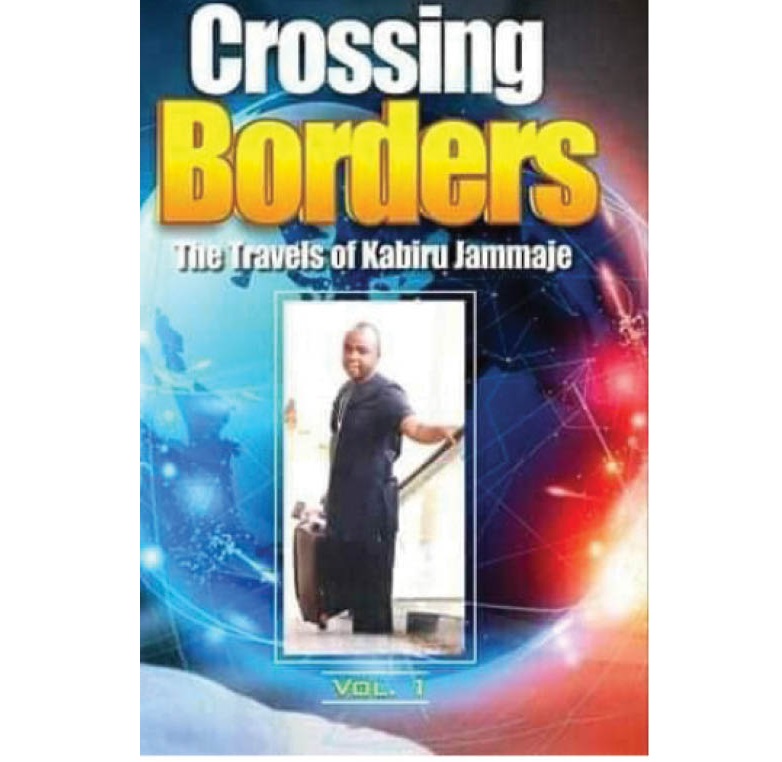Title: Crossing Borders
Author: Kabiru Jammaje
Reviewer: Muazu Muazu
Critical reading of Abubakar Imam’s ‘Tafiya Mabudin Ilimi’, Daniel Defoe’s ‘Robinson Crusoe’, John Bunyan’s ‘Pilgrim’s Progress’, Jonathan Swift’s ‘Gulliver’s Travels’, Veronique Tadjo’s ‘The Shadow of Imana’, Tim Butcher’s ‘Blood River’ and ‘The Travels of Ibn Batuta’ apparently inspired Kabiru Jammaje’s collection of 12 short travelogues.
Colombian Nobel Laureate, Gabriel Garcia Marquez, the father of magic realism, once said: “Ultimately, literature is nothing but carpentry. With both you are working with reality, a material just as hard wood.” He said that literature and carpentry are tasking vocations.
Travelogues are increasingly becoming popular in Nigeria today. They come mostly in form of articles in the newspapers and other platforms. These efforts were made by people of different callings.
However, reporters, freelance journalists, teachers, tourists, professionals, non-professionals, students as well as other travellers seem to be leading with varying degrees of success.
These attempts in spite of their shortcomings have bridged important gaps in Nigerian literature at various levels. They also provide hidden secrets that could attract tourism – how to reach destinations – give cultural background as well as the dos and Don’ts of many places around the world. They also illuminate, educate, inform and entertain readers.
As they say, writing is about judgement and interpretations – personal interpretations of moral vision. So also, the content of any work gives it an agency in literature.
‘Crossing Borders: The Travels of Kabiru Jammaje’ racks the memory of the reader to the 18th century when writers settled into a locality for an extended period of time trying to absorb a sense of the place and observe with a travel writer’s sensibility. This is exactly what Jammaje sensed and observed in the twelve countries he visited.
This kind of travelogue was commonly known as the book of travels which mainly consisted of maritime diaries. This kind of writing became popular during the Song dynasty (960 – 1279) of medieval China. It is called travel record literature and was often written in narrative, prose, essay and diary style. It might be transnational or cultural in focus. It involves travel to different places within same and record of space flight.

The whole idea of being a ‘travel writer’ might seem strange. Jammaje travelled to twelve countries, took notes, made authentic observations through writing with his students as well as readers who wish to lay their hands on the book.
The audience for his book are mostly students and people who have not been, nor will ever go, to the places visited by the author. This is quite a popular genre. People take the help of the traveller to know more about a particular place before deciding to visit it.
The book gives insight into the role played by the author in providing the historical background, as well as the life and times of some personalities in this collection of twelve short travelogues.
In page 91 to 98, the author narrated the Hajj rituals from beginning to end. His narrations on how he carried out the rituals are commendable and a good recipe for anyone who nurses the ambition of going for Hajj. He followed some specific rules to make his travelogue appealing and interesting to readers by revealing ‘hidden secrets’ that would attract many tourists. He highlighted the various attractions by mentioning the way and means to reach such destinations. He also named a few good hotels he stayed in and gave some cultural backgrounds of the places he visited while explaining the dos and don’ts there.
Readers must, according to Roland Barthes, separate a literary work from its creator in order to liberate the text from interpretive tyranny. Each piece of writing contains multiple layers and meanings. The essential meaning of a work largely depends on the impression of the reader rather than the “passions” or “tastes” of the writer; “a text’s unity lies not in its origins,” or its creator,” but in its destination,” or its audience.
Using a classical technique in magical illusions, below are some shortcomings in Crossing Borders:
First, the writer did not embellish the book with pictures to give a photographic description. He said that he took pictures in some places. For example: in Harare and Dubai “…we ventured into the Dubai Museum and saw a lot of ancient artefacts. We spent about two hours in the museum and took several photos.”
Secondly, the writer failed to stick to a single style of travel literature. He used narrative, prose, essay, and diary style throughout. Is ‘Crossing Borders’ a coherent or aesthetic narrative? How does it associate with outdoor literature, fictional or non – fictional travel literature?
Thirdly, he wrote about Johannesburg, the first country he visited, “l happened to sit near a well-mannered lady whom I initially thought was an Indian.” Jammaje narrated how the conversation started and continued that the lady, who was Lebanese and a pilot, told him she lived in Kano, and that was all. This created some level of suspense. If the writer could not narrate the issues he discussed with the lady, he should have left them out.
However, ‘Crossing Borders’ makes interesting read and remains a helpful companion to travellers and readers across the world.
Muazu Muazu is a reviewer and Public Affairs Commentator from Kano.

 Join Daily Trust WhatsApp Community For Quick Access To News and Happenings Around You.
Join Daily Trust WhatsApp Community For Quick Access To News and Happenings Around You.


